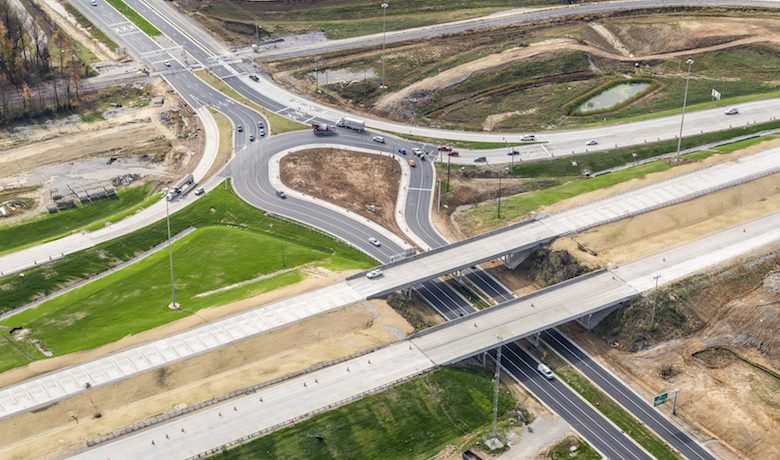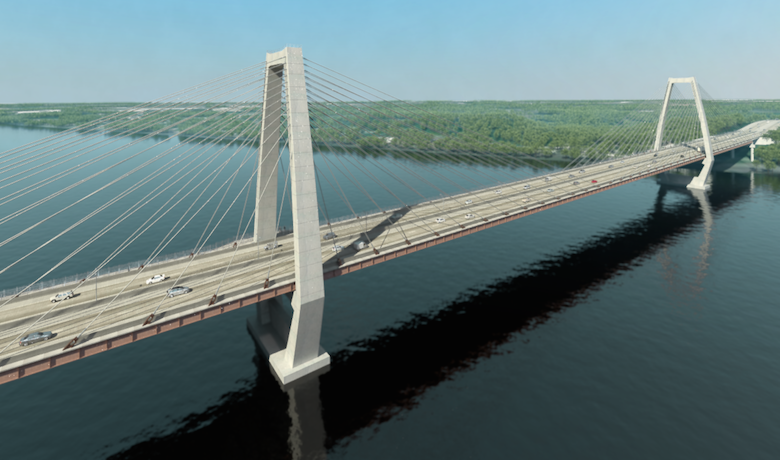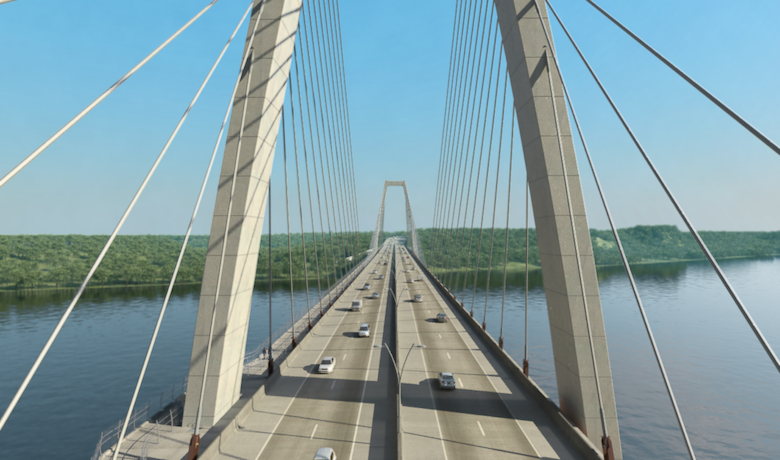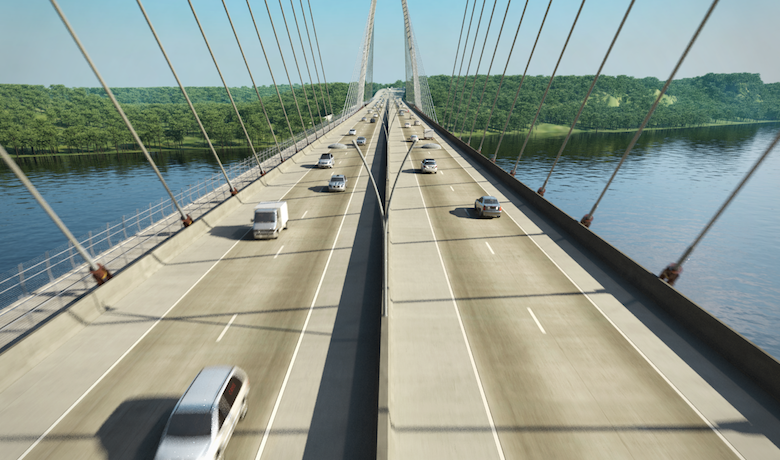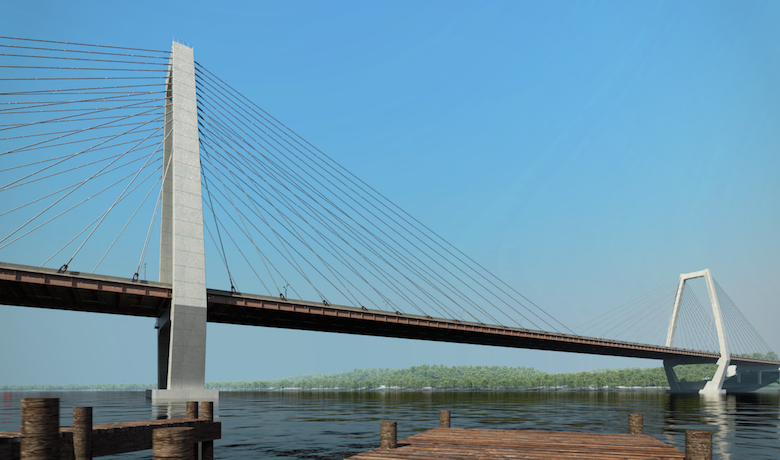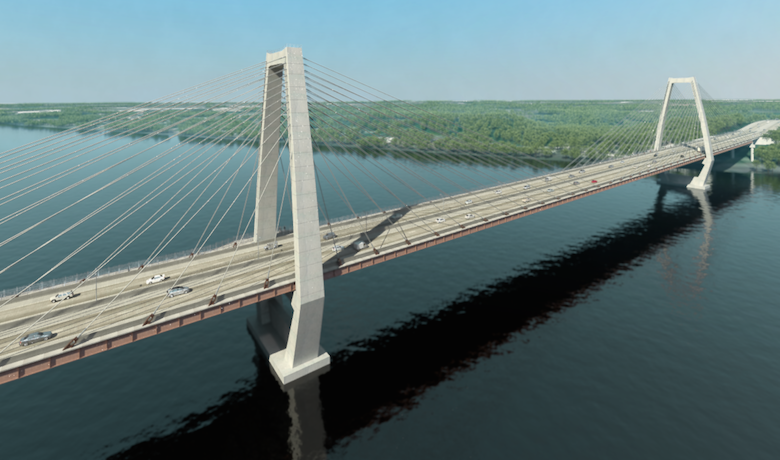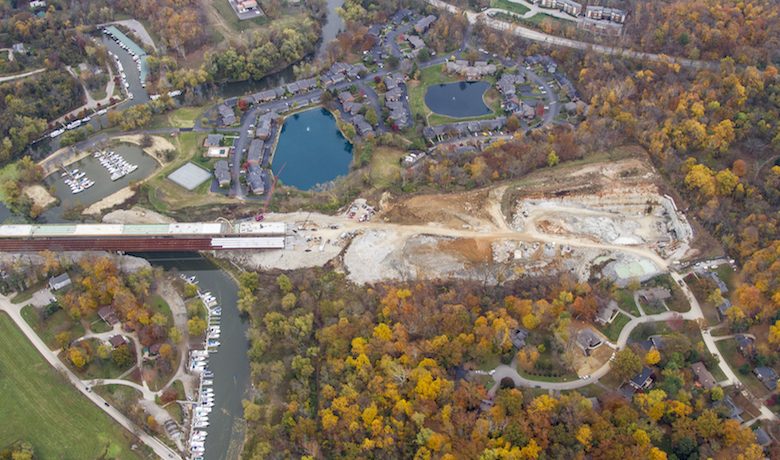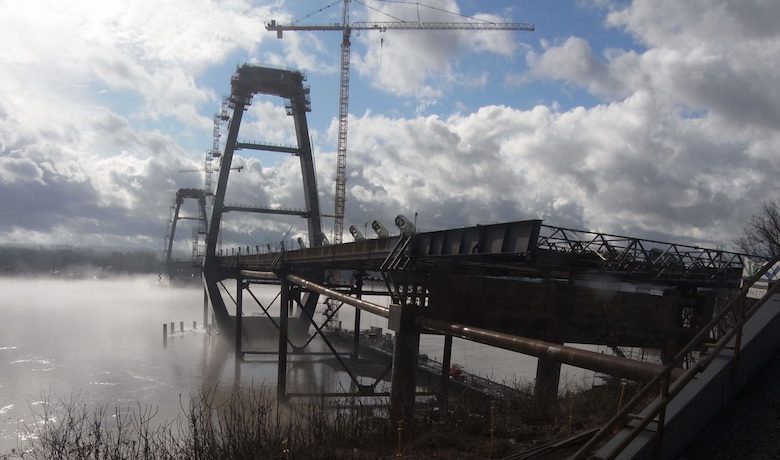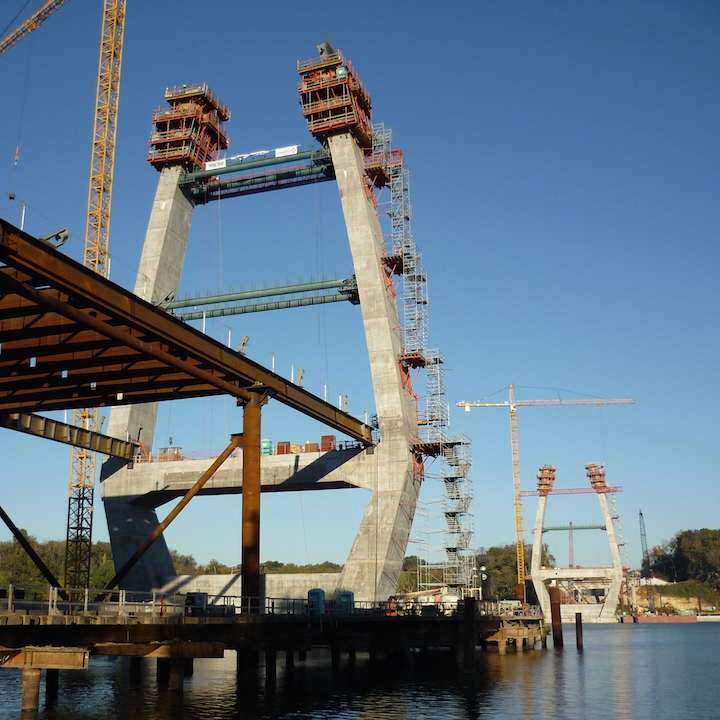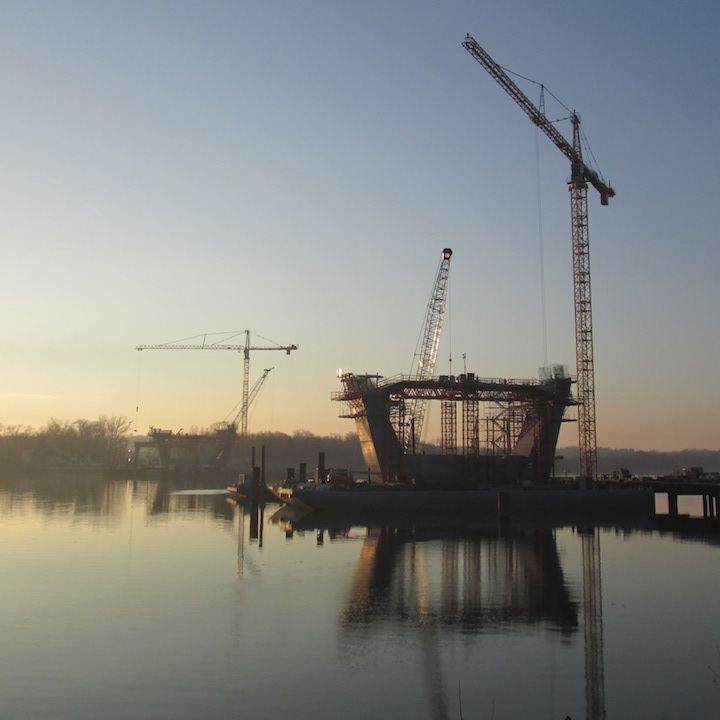Technical overview
With regard to section 4 (Kentucky), earthworks were carried out using the blast method in a semi-urban zone with local residents and existing road infrastructure in fairly close proximity. Blast operations had to be conducted with painstaking care to meet demanding constraints regarding vibration and noise. Moreover, road traffic could not be interrupted for more than 20 minutes during blast operations, thereby requiring the implementation of a precise and complex work schedule. As was the case for the roadway, the tunnel was excavated in the traditional manner using the blast method. Weak coverage and the uneven terrain made this activity a little tricker to carry out.
On the other side of the Ohio River (Section 6 – Indiana), an initial difficulty was encountered when we were required to maintain traffic flow (both road and rail) during operations to reconfigure the interchange, specifically, construction of 7 engineering structures and 3 roundabouts. Beyond the issues of logistics and construction work-user interfaces, the local population had to learn to use a roundabout – a first in the region.
As for the cable-stayed bridge over the Ohio River, the complexity of this structure with its 2 curved, 91-metre-high, variable-geometry pylons embedded in the river required us to mobilise experts to determine the most appropriate construction methods. Accordingly, we called on the technical directorship at VINCI CONSTRUCTION GRANDS PROJETS for support. Building this type of pylon was a real challenge for the project team. A model of a pylon base was built onshore to provide a better understanding of the interfaces involving steel reinforcements, formwork, guy-wire anchors, and other components. As a result, we were able to adjust certain design components and ensure a regular rhythm for the lifting operations.
The rear span (on the Indiana side) was achieved by incremental launching. Launching a 38-metre-wide metal deck, with constraints due to the great height in this section of the cable-stayed bridge, was a first in this region of the United States. This method, however, allowed us to deal with the fickle Ohio River whose tides and strong currents can regularly disrupt construction work.


